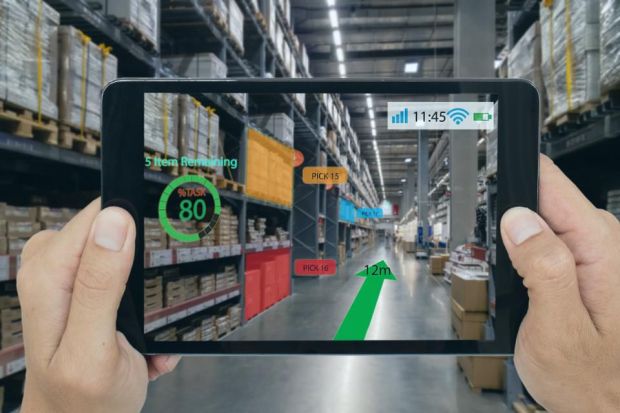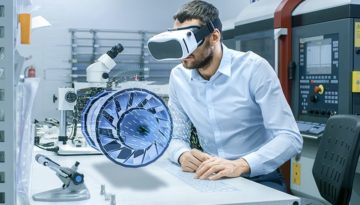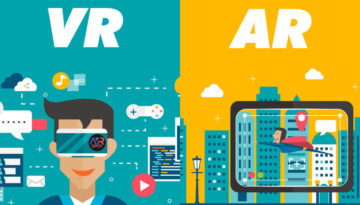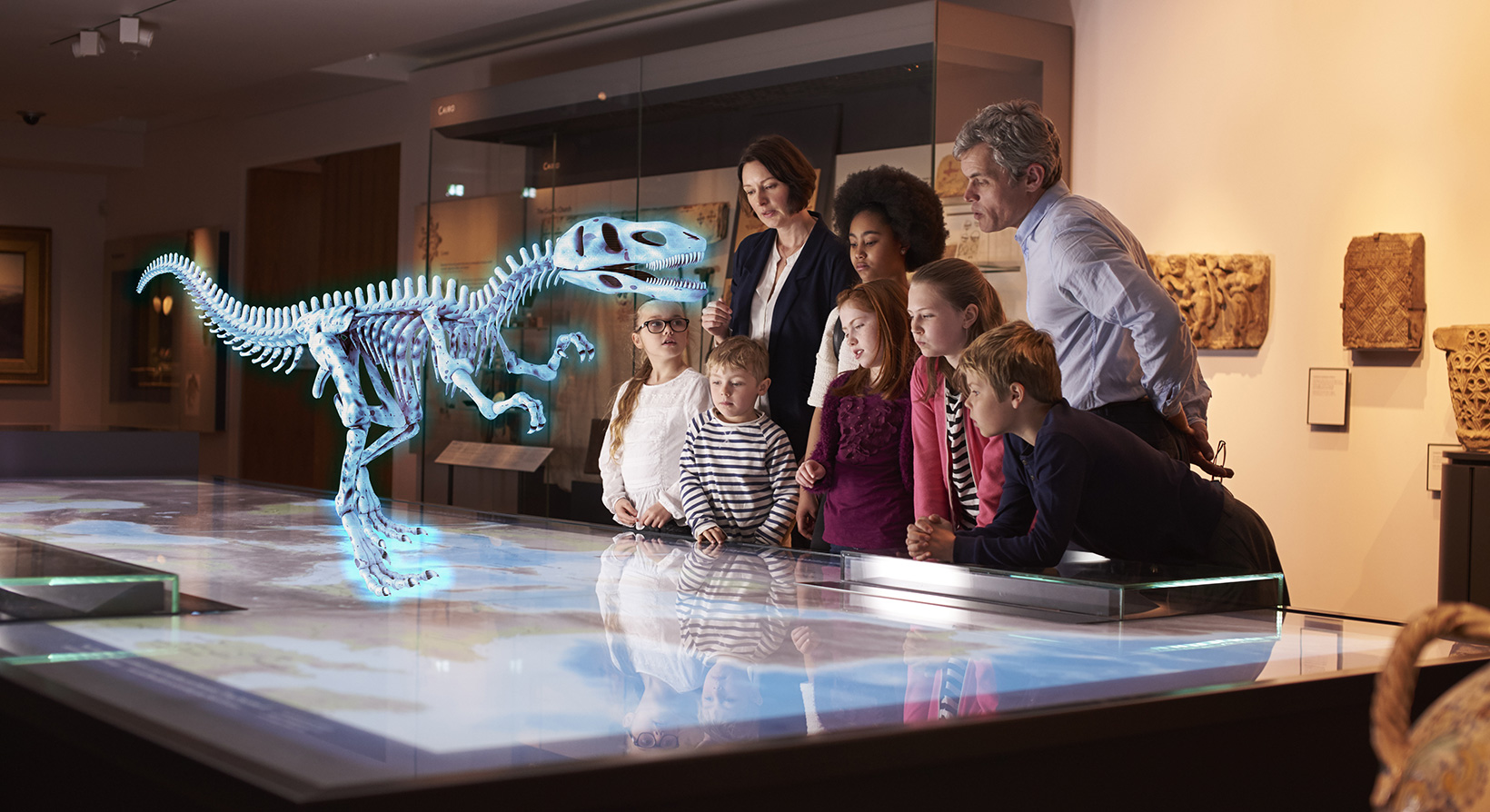AR and VR In Manufacturing: Use Cases And Benefits
While AR/VR technology has come to be associated mostly with gaming and infotainment, it’s gradually finding application in a wide array of industries. Specifically, in manufacturing, AR/VR is currently creating positive disruption for a vast number of operational processes: from design and prototyping to the final production and assembly.
In manufacturing, the transformative potential of the reality technology (an umbrella term for AR/VR) is inherently tied to the demand for continuous production and non-disruptive performance: in a competitive business environment, every second of downtime spells revenue loss. With AR and VR potential to create a virtual simulation of just about every facet of manufacturing process, the effect of its use could be truly revolutionary.
AR/VR Applications In Manufacturing Industries
So let’s now examine some of the most prominent use cases for augmented and virtual reality in manufacturing and discover how it can add value to business.
Design and prototyping
At this initial stage, VR can actually demonstrate how a product would look like without creating a physical prototype. In the automotive industry, Ford Motors has been using its own FIVE (Ford Immersive Vehicle Environment) virtual reality technology long before consumer Oculus and HTC headsets had hit the market, to create virtual representations of yet non-existent vehicles in the tiniest detail. Designs are transmitted into virtual car environments, enabling engineers to see what it’s like to be inside of the future car.
Needless to say, VR technology has also enabled Ford Motors to leverage remote design teams and attract the best global talent: when you work in a virtual environment, your physical location is no longer a problem.
Inventory management
While AI algorithms can streamline the complex process of managing inventory databases, the task of picking a product from a warehouse shelf still involves manual labor. AR technology helps eliminate confusion and make this process quick and precise. A warehouse worker holding an iPad or wearing Microsoft HoloLens (or any other headset, for that matter) gets instructions about the exact location of a particular item and is guided to the very aisle and shelf where it is stored. No more guesswork and getting lost amidst the similarly looking shelves – anyone who has ever been inside an industrial warehouse can understand the value of this solution.
 Image source: mhdsupplychain.com.au
Image source: mhdsupplychain.com.au
As of today, companies like DHL and SAP are taking full advantage of AR-enhanced inventory management.
Preventing accidents and disruptions
VR is helping predict, and thus potentially evade the hazards and disruption risks associated with the use of an assembly line. By simulating production environment, manufacturing companies can indicate potential threats and eliminate them long before they even arise. The value of this solution is difficult to overlook, since it helps reduce downtime as well as repair and maintenance expenses, and enhances employee security.
For example, industrial equipment manufacturer Gabler has integrated VR into its manufacturing processes. Assisted by VR technology, the company inspects production lines for potential hazards and thus helps ensure safety and quality.
Real-time employee instruction
AR and VR are widely used for employee instruction and education as it can simulate every possible process and environment.
Here at AVRspot we have expertise in making custom solutions that guide assembly line workers through every complex detail of the production process in real-time. A worker gets virtual instructions projected into his iPad or AR glasses as he proceeds with his work. This helps the organization save weeks of even months of lengthy training and accounts for eliminating the notorious human factor and avoiding mistakes.
See the demo example here.
Read also: How Virtual And Augmented Reality Simulators Change Workforce Training
Benefits Of AR/VR Use In Manufacturing
These vivid AR and VR use cases should give you an idea about why companies across industries are ready to invest into AR/VR development and implementation. More specifically, the benefits of AR/VR use include:
Better time-to-market
In today’s competitive business environment, the need for increased agility is self-explanatory. Augmented and virtual reality solutions help omit intermediary phases of the production process, like, for example, creating a physical prototype, and quickly launch new products into production.
Reducing the demand for expertise and training also ultimately accounts for increased time-to-value: the solutions that we build here at AVRspot are capable of delivering knowledge and expertise directly to workers’ iPads or headsets so they no longer have to wait for their experienced colleagues to coach them and give them instructions.
No downtime or disruptions
In a contemporary enterprise, manufacturing lines work 24/7 and can afford zero downtime. By simulating key processes and performing virtual tests of production lines and equipment, AR/VR technology helps pinpoint mistakes which could lead to potential disruptions and eliminate them before they stall operations.
Using VR to instruct employees in real time helps avoid downtime caused by unexpected illness or absence of an experienced worker: any junior employee on the shift can now perform similar tasks guided by virtual instructions.
Read also: How Augmented Reality Integration Can Help You Grow Your Business
Increased security
Needless to say, increased predictability of production processes also implies increased security. AR/VR technology helps detect and eliminate threats, instruct employees and thus reduce the number of onsite accidents.
Better quality
AR/VR brings increased precision to every aspect of the industrial manufacturing process, ensuring not only fast time-to-market, but also better quality of manufactured goods.
Read also: Five Ways Augmented Reality Enhances Industrial Production
Reduced expenses
From a business perspective, implementing AR/VR will ultimately account for reduced expenses: by eliminating the costly trial and error phase, they help organizations ensure bottom line growth.
By providing guidance and instructions in real-time, VR solutions help reduce training and coaching expenses; they also help organizations reallocate resources by letting their most experienced workers focus on areas which need expertise and attention.
Surely, implementing AR/VR in industrial manufacturing will require time and investment. It also involves meeting challenges like indicating areas for its implementation, integration with legacy equipment, support on employee level, etc. The best practices for enterprise scale AR/VR implementation involve launching a pilot project and moving on according to its outcome.
Need an expert advice on AR/VR implementation? Request a free consultation now from our expert team!






